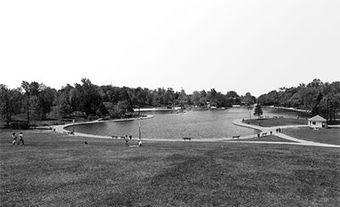John MacIntosh Lyle
John MacIntosh Lyle, architect, urban planner, teacher, designer (b at Connor, Ire 13 Nov 1872; d at Toronto 19 Dec 1945). He attended the Hamilton School of Art and trained as an architect at the Yale School of the Arts before enrolling (1894) in the École des beaux-arts, Paris. Lyle's training was reinforced by 9 years' work in New York for several large firms. Upon return to Canada in 1906 he was instrumental in disseminating the beaux-arts ideals to the architectural profession through Atelier Lyle's lectures at University of Toronto. His early works reflect the beaux-arts style - ROYAL ALEXANDRA THEATRE (1906) and UNION STATION (1913-27) in Toronto - as do his later works - Memorial Arch, Royal Military College, in Kingston (1923) and Bank of Nova Scotia in Ottawa (1923-24).Later in the 1920s, through an examination of Canada's architectural heritage, Lyle went on to develop a distinctively Canadian style. His integration of Canadian floral and faunal motifs into the design of his buildings parallels the artistic developments of the GROUP OF SEVEN. For example, in 1929 he designed 3 bank branches that codified his nationalistic feelings: Dominion Bank (Yonge and Gerrard, Toronto), Bank of Nova Scotia (8th Avenue SW, Calgary) and Bank of Nova Scotia (head office, Halifax). In these buildings he integrated elaborate sculptural motifs in stone, metal, plaster, fresco, glass and mosaic to express the Canadian heartland. In 1930 he built the Runnymede Library, Toronto, which combined colonial Georgian and early Québec styles.
Lyle's work in URBAN AND REGIONAL PLANNING made him a leader in the City Beautiful movement, and he developed visionary designs for Toronto's Civic Improvement League. His designs submitted to the Dominion Coin Competition (1936) influenced the adoption of animal and leaf motifs used in contemporary Canadian coinage.

 Share on Facebook
Share on Facebook Share on X
Share on X Share by Email
Share by Email Share on Google Classroom
Share on Google Classroom


